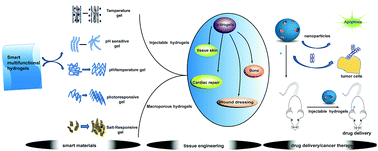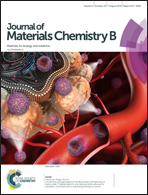Multifunctional smart hydrogels: potential in tissue engineering and cancer therapy
Abstract
In recent years, clinical applications have been proposed for various hydrogel products. Hydrogels can be derived from animal tissues, plant extracts and/or adipose tissue extracellular matrices; each type of hydrogel presents significantly different functional properties and may be used for many different applications, including medical therapies, environmental pollution treatments, and industrial materials. Due to complicated preparation techniques and the complexities associated with the selection of suitable materials, the applications of many host–guest supramolecular polymeric hydrogels are limited. Thus, improvements in the design and construction of smart materials are highly desirable in order to increase the lifetimes of functional materials. Here, we summarize different functional hydrogels and their varied preparation methods and source materials. The multifunctional properties of hydrogels, particularly their unique ability to adapt to certain environmental stimuli, are chiefly based on the incorporation of smart materials. Smart materials may be temperature sensitive, pH sensitive, pH/temperature dual sensitive, photoresponsive or salt responsive and may be used for hydrogel wound repair, hydrogel bone repair, hydrogel drug delivery, cancer therapy, and so on. This review focuses on the recent development of smart hydrogels for tissue engineering applications and describes some of the latest advances in using smart materials to create hydrogels for cancer therapy.

- This article is part of the themed collection: Recent Review Articles


 Please wait while we load your content...
Please wait while we load your content...